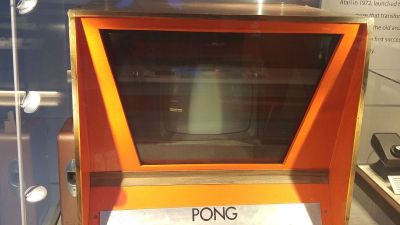The video game console is now a home entertainment hub that pulls in all forms of entertainment via an internet connection, but probably for most readers it was first experienced as an offline device that hooked up to the TV and for which new game software had to be bought as cartridges or for later models, discs. Stepping back through the history of gaming is an unbroken line to the 1970s, but which manufacturer had the first machine whose games could be purchased separately from the console? The answer is not that which first comes to mind, and the story behind its creation doesn’t contain the names you are familiar with today.
The Fairchild Channel F never managed to beat its rival, the Atari 2600, in the hearts of American youngsters so its creator Jerry Lawson isn’t a well-known figure mentioned in the same breath as Atari’s Nolan Bushnell or Apple’s two Steves, but without this now-forgotten console the history of gaming would have been considerably different.
The Coin-Op Project That Kicked It Off

Jerry Lawson was an engineer from New York who had arrived at Fairchild Semiconductor in 1970 after having worked at various companies in the defense electronics industry. Working as part of their customer engagement effort, he achieved prominence in the company by revolutionising the point of contact with the customer using an RV (yes, a camping vehicle) converted as a demonstration lab for Fairchild products. He was lucky enough to be in the right place at the right time to be a member of the famous Homebrew Computer Club, cradle of so much of the later microcomputer industry, which put him at the center of a web of contacts covering the games business as it was in the early 1970s.
Though his employer was not involved in gaming, Jerry got his start in that field as a side project. When his friend Allan Alcorn installed the first Pong machine in Andy Capp’s Tavern it suffered from customers interfering with its coin mechanism to score free plays, so Jerry produced a game cabinet of his own called Demolition Derby that had a more robust system. This led to Fairchild Semiconductor International offering him the chance to start their new video game division, and the road to the Channel F was laid.
For the First Time, Removable Software
The first home video consoles were one-trick devices that presented either a single game such as Pong or a set of variant games enabled through circuitry. As Al Williams wrote in his article on the 1972 Magnavox Oddyssey, that console had something resembling a game cartridge, but instead of containing software it rewired the machine’s configuration. Lawson’s innovation was to incorporate the game software and even deliver extra functionality such as RAM into the cartridge, allowing a near-infinite variety of games to be programmed. With this he created what would lead to the entire business model of console gaming, as well as sowing the seeds of the computer games development and publishing industry.

The Channel F was launched in November 1976, nearly a year before Atari’s VCS console. Its Fairchild F8 microprocessor, low resolution color graphics, and 2K RAM were outclassed by its rival despite its far superior joysticks, and its lack of the Atari’s much larger software catalog saw it steadily lose ground into the 1980s despite a hardware revamp. Surprisingly it continued production until 1983, by which time it must have appeared an anachronism when compared to the crop of 8-bit microcomputers.
Lawson had by 1980 left Fairchild to found Videosoft, a company producing Atari software, and the chipmaker would not release any follow-up to the console. After Videosoft he became a consulting engineer and moved away from the limelight. Having suffered ill-health due to diabetes, Jerry passed away in April 2011.
There are many names from the annals of computing history who roll off the tongue. People such as Jobs and Wozniak, Bushnell, Dabney, Sinclair, Miyamoto, or Miner. We should also add Jerry Lawson to that list, as his vision to make one console and sell multiple games, done inexpensively with the use of the PCB edge connector, set the standard for decades to come.
No comments:
Post a Comment